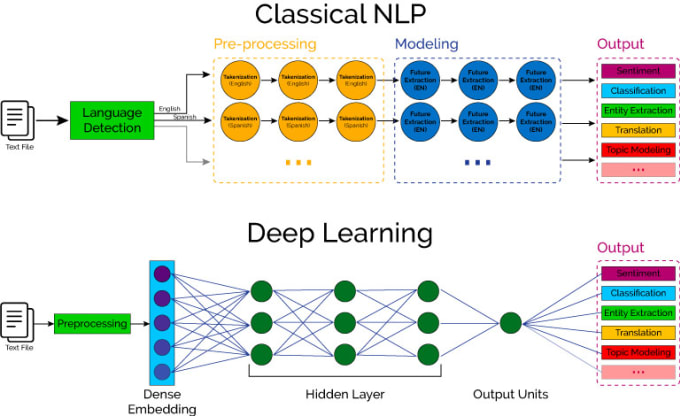In today’s digital age, social media has become an integral part of our lives. It serves as a platform for people to express their thoughts, share experiences, and engage in conversations. With millions of users actively participating in social media discussions, it has become crucial for businesses to tap into these conversations and gain valuable insights. This is where social listening sentiment analysis comes into play. In this article, we will delve into the concept of social listening sentiment analysis, its benefits, and how it can help businesses make informed decisions.
What is Social Listening?

Social listening refers to the process of monitoring social media platforms to gain insights into online conversations related to specific topics, keywords, or brands. It involves tracking mentions, discussions, and trends across various social media channels such as Facebook, Twitter, Instagram, and LinkedIn. Social listening provides businesses with an opportunity to understand their target audience, identify emerging trends, and gather feedback.
Understanding Sentiment Analysis
Sentiment analysis, also known as opinion mining, is a technique used to determine the emotional tone behind a piece of text. It involves analyzing the sentiment expressed in social media posts, comments, reviews, and other forms of user-generated content. Sentiment analysis can categorize the sentiment as positive, negative, or neutral, providing valuable insights into public perception.
The Role of Social Listening Sentiment Analysis
Social listening sentiment analysis combines the power of social listening with sentiment analysis techniques. By analyzing the sentiment of online conversations, businesses can gauge the overall perception of their brand, products, or services. It helps them understand customer sentiment, identify potential issues, track competitors, and uncover opportunities for improvement.
Benefits of Social Listening Sentiment Analysis
- Brand Reputation Management: Social listening sentiment analysis allows businesses to monitor and manage their brand’s online reputation. By understanding public sentiment, businesses can identify any negative mentions or potential crises and take appropriate actions to mitigate damage.
- Customer Insights: Analyzing sentiment helps businesses gain valuable insights into their customers’ preferences, opinions, and pain points. By understanding customer sentiment, businesses can tailor their products, services, and marketing strategies to meet their customers’ expectations effectively.
- Competitive Analysis: Social listening sentiment analysis enables businesses to monitor their competitors’ online presence and track their sentiment among customers. This information can be used to identify gaps in the market, differentiate from competitors, and refine business strategies.
- Product and Service Improvement: By analyzing sentiment, businesses can identify areas of improvement for their products or services. It helps them understand customer feedback, identify common pain points, and make data-driven decisions to enhance the overall customer experience.
- Identifying Influencers: Social listening sentiment analytics helps businesses identify influential individuals or groups who hold significant sway over public opinion. By engaging with these influencers, businesses can amplify their brand message and reach a wider audience.
Step-by-Step Process of Conducting Social Listening Sentiment Analysis
- Define Objectives: Clearly define the goals and objectives of your social listening sentiment analysis. Determine the specific topics, keywords, or brands you want to monitor.
- Choose the Right Tools: Select social listening tools that can effectively track and analyze conversations across various social media platforms. Some popular tools include Brandwatch, AIM Insights, Sprout Social, and Mention.
- Collect Data: Set up monitoring streams to collect relevant data from social media channels. Gather mentions, hashtags, and keywords related to your defined objectives.
- Analyze Sentiment: Utilize sentiment analysis techniques to categorize the collected data into positive, negative, or neutral sentiments. Machine learning algorithms and natural language processing (NLP) tools can assist in automating this process.
- Extract Insights: Analyze the sentiment data to gain insights into customer opinions, market trends, and brand reputation. Look for patterns, trends, and outliers that can inform your business decisions.
- Take Action: Based on the insights obtained, take appropriate actions to respond to customer feedback, address concerns, and improve your products or services. Engage with your audience and leverage positive sentiment to enhance brand loyalty.
Tools and Techniques for Social Media Sentiment Analytics

- Natural Language Processing (NLP): NLP techniques, such as text classification and sentiment analysis algorithms, are used to analyze and categorize the sentiment expressed in social media content.
- Machine Learning (ML): ML algorithms can be trained to identify patterns in text data and classify sentiment. These algorithms learn from large datasets and improve their accuracy over time.
- Social Listening Platforms: Dedicated social listening platforms provide tools and dashboards for monitoring, analyzing, and reporting social media conversations.
- Keyword Tracking: Tracking specific keywords and hashtags relevant to your industry or brand can help in filtering and analyzing relevant conversations.
Overcoming Challenges in Social Media Sentiment Analysis
- Ambiguity in Language: Understanding context and sarcasm in social media conversations can be challenging. Developing robust NLP models that consider nuances and cultural differences is crucial.
- Data Volume and Noise: With the vast amount of data available, filtering out noise and irrelevant information becomes critical. Effective data preprocessing techniques can help streamline the analysis.
- Privacy and Ethical Considerations: Respecting user privacy and adhering to ethical guidelines while analyzing user-generated content is essential. Compliance with data protection regulations should be a priority.
Real-world Applications
- Brand Monitoring: A leading retail brand used social listening sentiment analysis to monitor customer sentiment and identify emerging trends. This helped them enhance their marketing campaigns, improve customer engagement, and stay ahead of their competitors.
- Crisis Management: A multinational corporation leveraged social listening sentiment analytics during a public relations crisis. By monitoring social media conversations and sentiments, they were able to address customer concerns promptly and regain public trust.
- Product Development: A tech startup used social listening sentiment analysis to gather customer feedback on their beta product. This enabled them to identify areas for improvement and make data-driven decisions to enhance the product’s features and user experience.
Best Practices for Effective Social Media Listening Sentiment Analysis
- Define Clear Objectives: Clearly define your goals and objectives before starting social media listening sentiment analysis. Focus on specific topics, keywords, or brands to avoid information overload.
- Choose the Right Tools: Select social listening tools that align with your business requirements and provide comprehensive sentiment analysis capabilities.
- Continuous Monitoring: Social listening sentiment analytics should be an ongoing process. Monitor conversations consistently to capture real-time insights and adapt your strategies accordingly.
- Contextual Analysis: Consider the context and broader conversation surrounding a particular sentiment to avoid misinterpretation.
- Human Validation: While automated sentiment analysis is helpful, human validation is essential to ensure accuracy. Human analysts can provide additional insights and context that automated tools may miss.
The Future of Social Listening Sentiment Analytics
As technology continues to advance, social listening sentiment analytics will become even more sophisticated. Machine learning algorithms will improve accuracy and contextual understanding, enabling businesses to extract deeper insights from social media conversations. Additionally, the integration of social listening sentiment analysis with other data sources, such as customer surveys and market research, will provide a comprehensive understanding of consumer sentiment.
Case Study: Leveraging Social Listening Sentiment Analysis for Business Growth
A mid-sized e-commerce company specializing in fashion and accessories is active on social media and has a positive presence. Despite its active audience and their engagement, they were facing difficulty in managing this engagement. To be aware of how positive and negative the target audience feels toward the brand is challenging. So they decided to depend on sentiment analyses tool. To be aware of their customers engagement and work on enhancing it.
Objectives
The company wanted to use a sentiment analysis tool for some specific goals:
- Understand Customer Sentiment Trends: Analyze the customers’ different conversations. To be able to understand their overall sentiment toward the brand.
- Improve Brand Reputation: Be able to know the customer’s concerns and problems that they face while dealing with the brand.
- Refine Product Offerings: Use the customers’ insights to improve the products they offer through their feedback.
- Enhance Marketing Strategies: Identify the best content to engage the audience in it and increase the interaction.
Approach
- Implementing a Social Listening Tool
The company doubted a social listening tool would be able to monitor their performance. Through tracking the customer’s conversations, hashtags, reviews, and feedback. To be able to gather different insights about their digital performance.
- Brand Mentions: Track any reference to the company name or its products.
- Keywords & Hashtags: Track any hashtags related to the brand or the fashion industry.
- Customer Complaints & Praise: Track the reviews and comments related to the products or customer services.
- Conducting Sentiment Analysis
By depending on Natural Language Processing (NLP) and machine learning algorithms. The tool was able to categorize the sentiment of the text into three categories.
- Positive Sentiment: Compliments about the brand styles, affordability, and customer services.
- Negative Sentiment: Complaints about the delivery time, wrong sizes, and refund polices.
- Neutral Sentiment: General inquiries about product stocks and offers.
- Identifying Key Insights & Trends
Through analyzing the sentiment of the customers, the company was able to identify key topics:
- What Customers Loved
- The designs of the products and their prices.
- The variety of options and collections in seasons.
- The highest engagement on influencers’ campaigns.
- Challenges & Pain Points Identified
- Delivery Delays: The customers were complaigns about the delivery dely timing, special in peak seasons.
- Sizing Issues: Many negative reviews were regarding the wrong sizes of different products.
- Customer Support Delays: some customers were geting dely responses from customers services on their queries.
Strategic Actions Taken
- Improving Customer Service Response Time
The company hired a customer support team to handle customers better. In addition, depends on AI chatbotsto respond to customers common questions.
- Enhancing Product Sizing & Description Accuracy
The company created a new size chart that became attached to their product on the websites. Also, collaborate with fashion influencers to guide customers in choosing the right sizes.
- Addressing Shipping & Delivery Concerns
The company collaborated with a new shipping company to speed up the delivery timing. In addition, it provides real-time tracking for the order shipping time.
Conclusion
Social listening sentiment analytics empowers businesses to tap into the wealth of information available in online conversations. By monitoring and analyzing sentiment, companies can gain valuable insights into customer opinions, brand reputation, and market trends. By leveraging the right tools, techniques, and best practices, companies can make data-driven decisions, enhance customer experiences, and stay ahead in today’s competitive landscape.
To experience the power of social listening sentiment analysis for your business, request a demo from AIM Technologies. Our advanced platform offers comprehensive monitoring, analysis, and reporting capabilities, helping you uncover actionable insights from social media conversations.
FAQs
1. How frequently should social listening sentiment analytics be conducted?
- The frequency of social listening sentiment analytics depends on your business objectives and industry. It is advisable to conduct regular monitoring to capture real-time insights and adapt strategies accordingly.
2. Can social listening sentiment analytics help in crisis management?
- Yes, social listening sentiment analytics is precious in crisis management. By monitoring sentiment during a crisis, businesses can address concerns promptly, manage their reputation, and regain public trust.
3. Is automated sentiment analysis always accurate?
- While automated sentiment analysis is helpful, it may not always capture the nuances of language and context accurately. Human validation is essential to ensure accuracy and provide additional insights.
4. Can social listening sentiment analysis help in identifying market trends?
- Yes, social listening sentiment analysis can help businesses identify emerging market trends by analyzing conversations and discussions related to specific industries or topics.
5. How can businesses leverage social media listening sentiment analysis to improve their products or services?
- By analyzing customer sentiment, businesses can identify areas for improvement, understand customer pain points, and make data-driven decisions to enhance their products or services.




